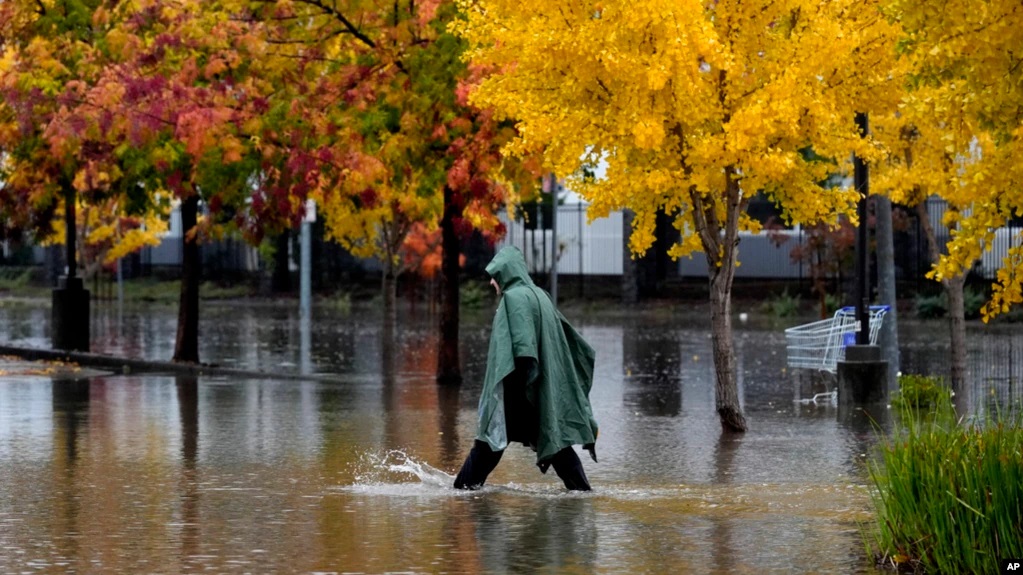Sudden Ocean Warming Spike Stirs Concern
Written by worldOneFm on April 27, 2023
Ocean temperatures have spiked well above record levels in the last few weeks, and scientists are trying to figure out what it means and whether it forecasts a surge in atmospheric warming.
Some researchers think the jump in sea surface temperatures stems from a brewing and possibly strong natural El Nino warming weather condition plus a rebound from three years of a cooling La Nina, all on top of steady global warming that is heating deeper water below. If that’s the case, they said, ocean temperature records being broken this month could be the first of many heat marks to fall.
From early March to this week, the global average ocean sea surface temperature jumped nearly two-tenths of a degree Celsius (0.36 degree Fahrenheit), according to the University of Maine’s Climate Reanalyzer, a trusted climate science tool. That may sound small, but for the average of the world’s oceans — which is 71% of Earth’s area — to rise so much in that short a time, “that’s huge,” said University of Colorado climate scientist Kris Karnauskas. “That’s an incredible departure from what was already a warm state to begin with.”
Climate scientists have been talking about the warming on social media and among themselves. Some, like University of Pennsylvania’s Michael Mann, quickly dismiss concerns by saying it is merely a growing El Nino on top of a steady human-caused warming increase.
It has warmed especially off the coast of Peru and Ecuador, where before the 1980s most El Ninos began. El Nino is the natural warming of parts of the equatorial Pacific that changes weather worldwide and spikes global temperatures. Until last month, the world has been on the flip side, a cooling called La Nina, that has been unusually strong and long, lasting three years and causing extreme weather.
‘Unusual pattern’
Other climate scientists, including National Oceanic and Atmospheric Administration oceanographer Gregory C. Johnson, say it doesn’t appear to be just El Nino. There are several marine heat waves or ocean warming spots that don’t fit an El Nino pattern, such as those in the northern Pacific near Alaska and off the coast of Spain, he said.
“This is an unusual pattern. This is an extreme event at a global scale” in areas that don’t fit with merely an El Nino, said Princeton University climate scientist Gabe Vecchi. “That is a huge, huge signal. I think it’s going to take some level of effort to understand it.”
The University of Colorado’s Karnauskas took global sea surface temperature anomalies over the past several weeks and subtracted the average temperature anomalies from earlier in the year to see where the sudden burst of warming is highest. He found a long stretch across the equator from South America to Africa, including both the Pacific and Indian oceans, responsible for much of the global temperature spike.
That area warmed four-tenths of a degree Celsius in just 10 to 14 days, which is highly unusual, Karnauskas said.
Part of that area is clearly a brewing El Nino, which scientists may confirm in the next couple months, Karnauskas said. But the area in the Indian Ocean is different and could be a coincidental independent increase or somehow connected to what may be a big El Nino, he said.
It’s been about seven years since the last El Nino, and it was a whopper. The world has warmed in that seven years, especially the deeper ocean, which absorbs by far most of the heat energy from greenhouse gases, said Sarah Purkey, an oceanographer at the Scripps Institution of Oceanography. The ocean heat content, which measures the energy stored by the deep ocean, each year sets new highs regardless of what’s happening on the surface.
Since that last El Nino, the global heat ocean content has increased .04 degree Celsius (.07 degree Fahrenheit), which may not sound like a lot but “it’s actually a tremendous amount of energy,” Purkey said. It’s about 30 to 40 zettajoules of heat, which is the energy equivalent of hundreds of millions of atomic bombs the size that leveled Hiroshima, she said.
On top of that warming deep ocean, the world had unusual cooling on the surface from La Nina for three years that sort of acted like a lid on a warming pot, scientists said. That lid is off.







